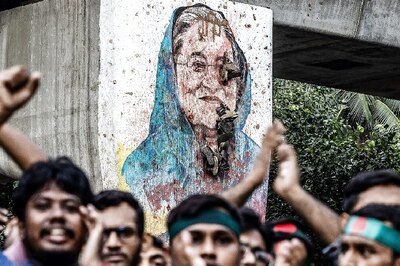
views
Thirty-Two lives snuffed out in yet another industrial disaster. India has little choice but to come to terms with what unfolded at the NTPC plant at Unchahar in Uttar Pradesh’s Rae Bareli district on Wednesday. A massive explosion ripped through a boiler at the state-run power utility, killing at least 32 staffers and injuring over 100.
The accident has again brought into focus industrial safety and the absence of protocol followed to avoid such disasters. The lower rung workers, mostly contractual labourers who are outside the purview of the company’s social security net, often become cannon fodder.
Experts say loopholes are too many to be counted, starting with the poor commissioning of boilers and auxiliaries by companies to the violation of safety protocols such as an absence of basic circuit breakers during welding and cutting jobs.
There are also complaints regarding lack of adequate protective equipment for labourers. Maintenance of boilers, which is the nerve centre for energy generation in a plant, is often ad hoc and safety valves are seldom checked at regular intervals. Any instrumentation interlock failure could invite massive disaster.
Another major issue is poor literacy and training levels of these contractual employees. In most cases, they possess poor or inadequate knowledge of modern process plants, which involve multiple levels of protection interlocks. The standard operating procedure (SOP) is rarely followed. When they needed it most, the fire hydrant line and the detection system fail to respond. Also, on several occasions these SOP’s aren’t updated when the process or the plant goes through minor modifications.
Consequently, it is not surprising such industrial disasters keep recurring at regular intervals. India’s worst industrial disaster, the 33-year old Bhopal gas tragedy is still fresh in people’s memories. The tragedy claimed over 3,500 innocent lives and left over five lakh injured.
The country’s track record has not improved much with several accidents taking place recently. In May, two contractual labourers were killed in SAIL’s IISCO Steel Plant in Burnpur.
In May last year, three engineers were killed in a boiler explosion at a private thermal power plant in Madhya Pradesh’s Annupur district.
In the same month, five persons had died in an explosion in a chemical factory in Maharashtra’s Thane district. In June 2016, three people lost their lives in a boiler explosion inside the Rashtriya Chemicals and Fertilizers (RCF) plant in Chembur.
India’s poor industrial safety record is also stamped by the latest available National Crime Record Bureau (NCRB) data. The 2015 NCRB data says 299 cases of industrial accidents were reported, in which 225 people were killed, including 29 women. The previous year saw 335 industrial accidents, resulting in 161 deaths. Most data on industrial accidents is seriously under-reported and non-fatal incidents are rarely covered.
The NCRB data further reveals that Madhya Pradesh saw the maximum number of deaths in industrial accidents. As many as 55 workers, including 14 women, died in the state’s industrial complexes. MP was followed by Gujarat, which recorded 31 deaths. Rajasthan ranked third with 28 fatalities. Uttar Pradesh recorded 23 deaths.
The perilous nature of Indian industries is also affirmed by the National Disaster Management Authority (NDMA).
According to its website, “only in last decade, 130 significant chemical accidents were reported in India, which resulted in 259 deaths”. NDMA lists 1,861 Major Accident Hazard (MAH) units, spread across 301 districts and 25 states & 3 Union Territories.
It’s not that there’s a dearth of a legal framework and protection offered to workers in these plants. There are many including the Explosives Act 1884, Factories Act 1948, Disaster Management Act 2005 and Petroleum Act 1934. Similarly, there are numerous safety protocols depending on the industries.
But given the frequency of industrial disasters, it seems, all these are just paper tigers that are rarely visible on the factory floor.




















Comments
0 comment